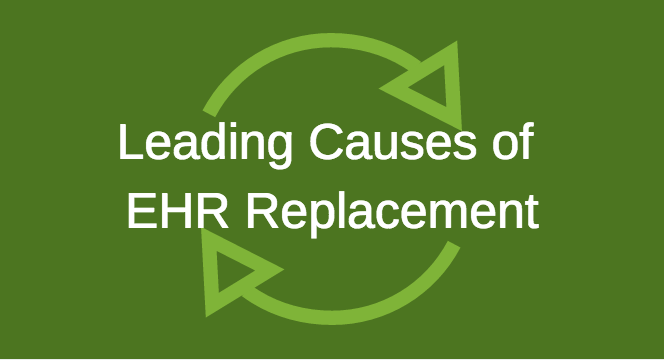Is the grass really greener in other EHR Pastures?
Replacing an EHR system can be a precarious journey, fraught with unforeseen consequences.
At eMedApps, we meet with clinical and HIT leaders daily, most looking for ways to improve organizational efficiency, improve interoperability, and migrate to new solutions.
In our experience, there can be benefits to replacing an aging EHR system, but the process requires planning and expert guidance, especially if your practice has limited IT resources.
EHR replacement projects tend to fall into three categories:
1. The Grass Looks So Much Greener
These projects tend to hatch after HIMSS or other large conferences, when clinical and administrative teams are drawn into the candy store experience of EHR products available in the healthcare IT market. One practice that fell victim to this mirage sought out our NextGen EHR professional services team when they replaced their existing NextGen system, only to reverse their decision six months later after discovering that the grass wasn’t as green as the sales team from the new vendor led them to believe.
The clinic’s IT department drove the change to the new EHR system without external input or competitive evaluation, believing that the cost of the new system would be less than upgrading hardware for their existing system. Once the providers began to use the new system though, the well-intentioned IT department realized they had made a mistake. That’s when they called us.
Their error in judgment carried a price tag in the hundreds of thousands of dollars for data conversions, retrofitting interfaces, re-training, and lost productivity.
Moving to a new EHR needs to be treated as a major endeavor and requires even more due diligence than your first EHR investment. Groups need to consider what they might be losing as they move to a new system as well as what they may gain.
2. The Goldilocks Principle
We specialize in helping providers make their EHR systems ‘just right.’ Every practice needs workflows that support providers and systems that interoperate as seamlessly as possible. Systems that are overly complex (in fit and function) are a leading driver of re-evaluation. Once an EHR re-evaluation begins, replacement occurs more than 60% of the time, in our experience.
3. Mergers and Acquisitions
In the ever-changing world of healthcare consolidation, M&A activity drives a larger and larger percentage of EHR replacements. Which EHR system remains after the dust settles? Surprisingly, it’s not always the acquiring practice, but sometimes it’s the practice being acquired. Healthcare IT teams want highly optimized, powerful, interoperable and standardized solutions. During a merger, teams must evaluate systems for fit, form and function. In this same vein, we’re seeing hospitals offering to pay for changes to a common EHR to address interoperability issues that many EHR vendors have not yet addressed. With the right tools, this wholesale replacement to compatibility is not necessary.
To explore this topic more fully, please download our feature article, Three Leading Causes of EHR Replacement (PDF).
Note: The full article also published as a guest post by Joe Cernik in July 2016 on EMR Daily News.

